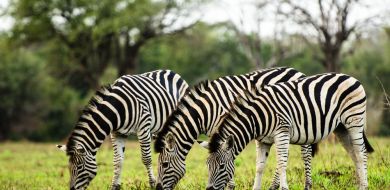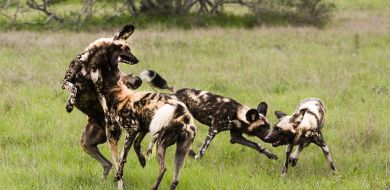Sabi Sabi Wild Facts: Southern Yellow-Billed Hornbill
on Dec 14, 2014This omnivorous bird has been made famous by the movie The Lion King, where it is used as a character named Zazu. As a common resident to the reserve it is not rare to see these hornbills, but every guests' reaction to this bird is one of amazement. The huge yellow bill leaves everyone fascinated and obsessed with trying to get a photo.
Being a common resident does not mean that this bird is boring by any stretch of the imagination. It has a very wide range of diet, consisting of both invertebrates and small vertebrates. Yellow-billed hornbills will eat insects, bird chicks, frogs, chameleons, ants, termites and the list goes on.

Their breeding behaviour is also very interesting. Yellow-billed hornbills are monogamous and will live in breeding pairs or small family groups. When they begin their courtship the male will feed the female for up to a month by bringing her small bits of food in his mouth. Once they have mated, the pair will seek out a hole in a tree, usually facing north east, and will use an array of leaf litter and bark as their nesting material. When the nest is ready the female will enter the hole and close the opening with her faeces, leaving a small slit in the entrance for her devoted partner to feed her while she incubates her eggs.
Southern Yellow-billed Hornbill - part two
The Southern Yellow-billed Hornbill (Tockus leucomelas) is a common, medium sized bird found in all areas of Southern Africa where there is scrub and acacia woodland. The yellow-billed hornbill is generally found living alongside its close relative, the red-billed hornbill.
It is distinguished by its very large, downwardly curved yellow beak, giving it the nickname of the "flying banana". The female's bill is shorter than that of the male, and the casque on the upper bill is also smaller. The plumage is white on the belly, grey on the neck, with the back and wing feathers being black and white.
The yellow-billed hornbill is mainly an omnivorous ground feeder, eating small insects, spiders, seeds and occasionally fruit. The species is known to forage co-operatively with dwarf mongoose, catching prey items that the mongoose scratch up from the ground. In return the hornbills alert the mongoose to danger from overhead raptors. There have been records of hornbills waiting expectantly at mongoose burrows, eager for the foraging to begin.
This species nests in naturally occurring holes in trees or in abandoned woodpecker or barbet nests.
Hornbills are a sociable species, generally living in small groups. They have a very distinctive clucking call. Once one bird starts calling, the whole group will often join in, creating a cacophony of sound. In the bushveld you will often see two hornbills sitting together, clucking away with very entertaining wings open, back and forth rocking, head bowing display.






